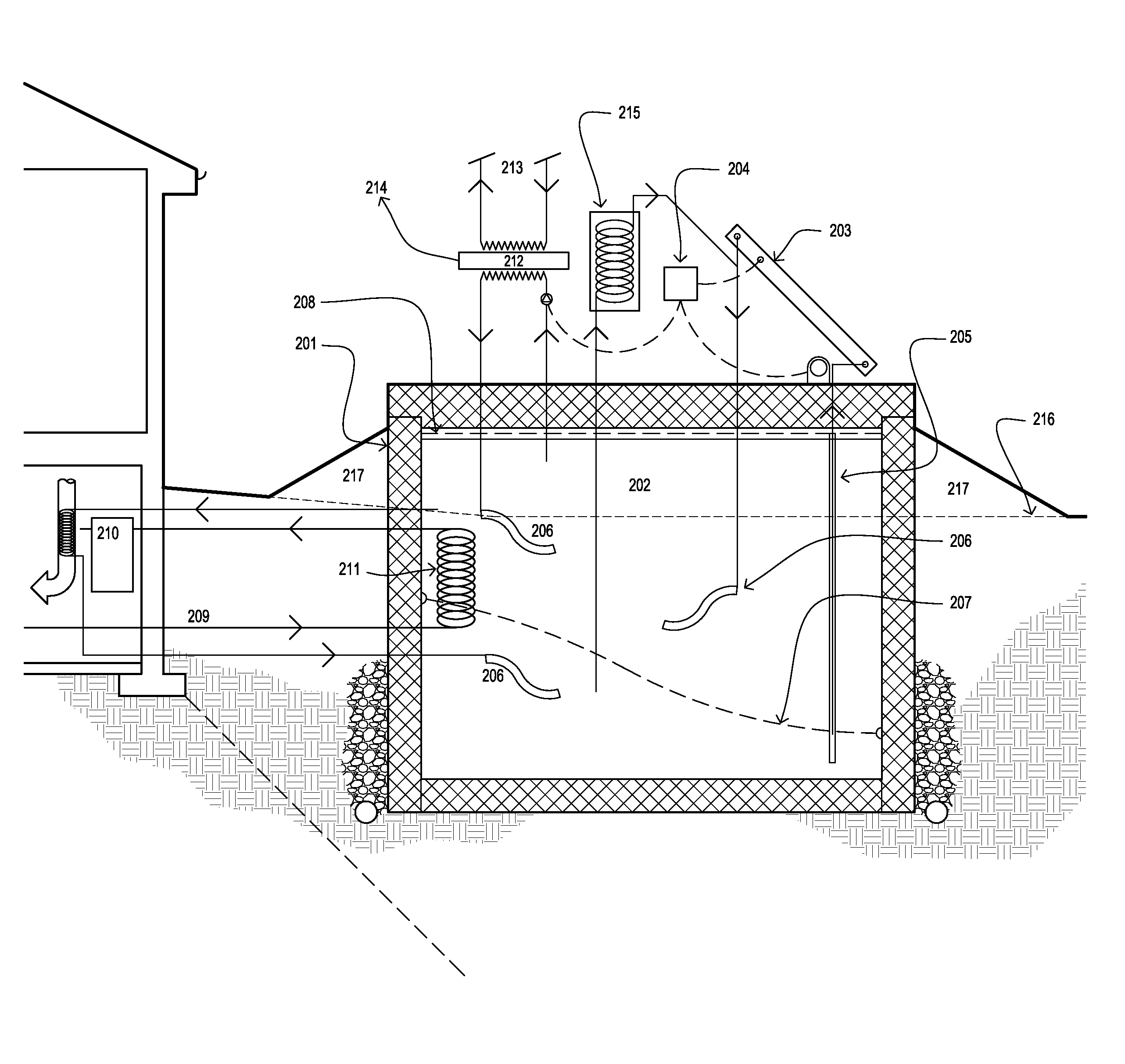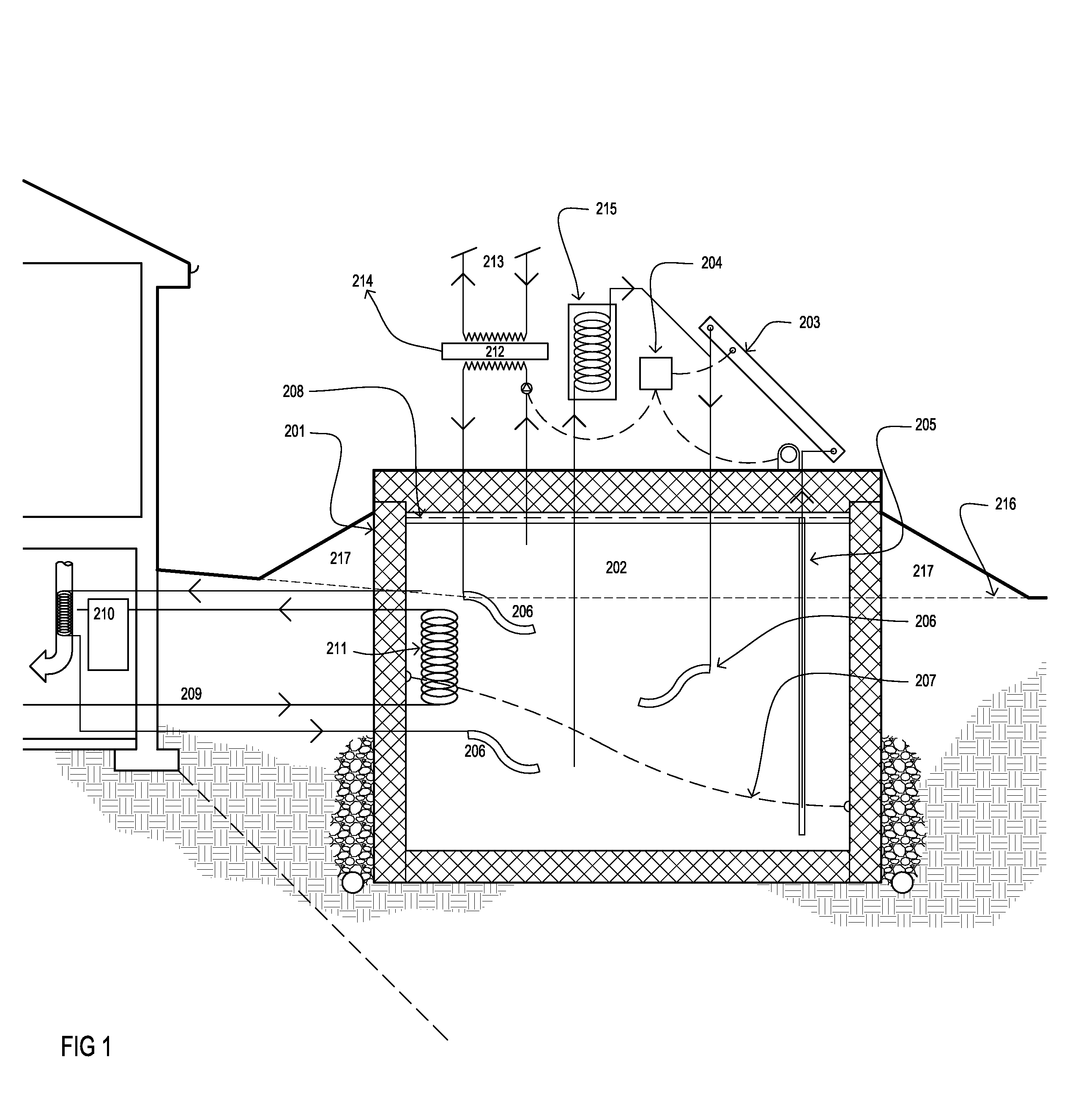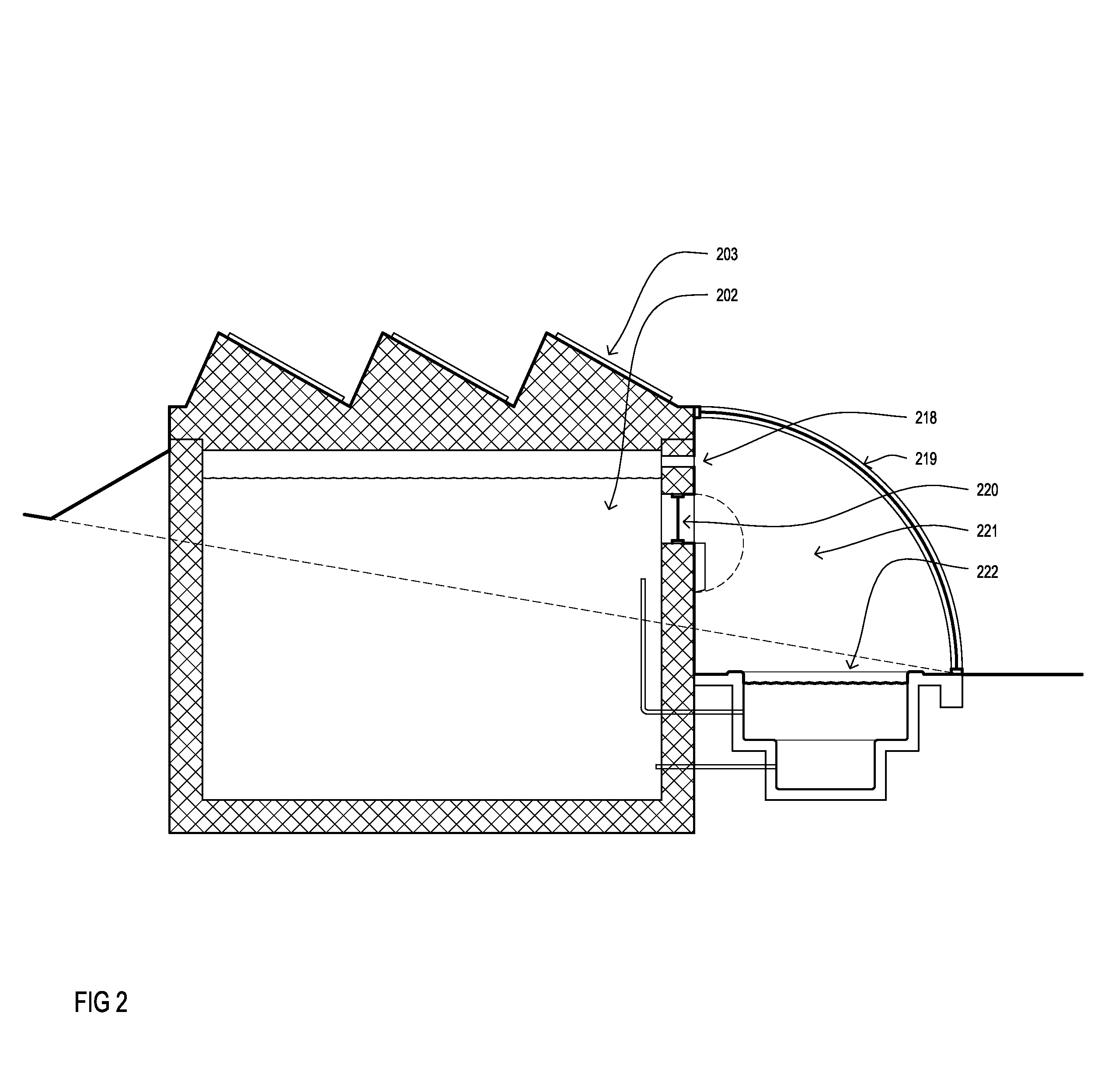Methods and apparatus for creating large energy storage mass through the collection and use of warmed water
a large energy storage and mass technology, applied in the field of renewable energy, can solve the problems of inherently polluting fossil fuel procurement, inability to meet the needs of large-scale production,
- Summary
- Abstract
- Description
- Claims
- Application Information
AI Technical Summary
Benefits of technology
Problems solved by technology
Method used
Image
Examples
Embodiment Construction
[0023]The detailed description is intended to illustrate the present invention, without, in any way, limiting its scope.
[0024]The invention is a component for use in a renewable energy system, applicable to residential, commercial and industrial buildings. The system uses, as one of its components, a large-scale energy storage system. The system is a large-scale energy storage in a warm or hot water thermal mass, and is designed with due consideration of the climate, terrain, zoning, property size, and installation cost.
[0025]FIG. 1 shows a method and system for storing warm thermal. The large thermal mass 202 is a liquid medium. In the preferred embodiment, the large thermal mass 202 is water. The large thermal mass 202 is contained within a storage container 201. The storage container 201 is characteristically built in a advantageous method. For example, the storage container 201 can have an outer structural wall of steel, concrete or rammed earth; a plurality of intermediate insu...
PUM
 Login to View More
Login to View More Abstract
Description
Claims
Application Information
 Login to View More
Login to View More - R&D
- Intellectual Property
- Life Sciences
- Materials
- Tech Scout
- Unparalleled Data Quality
- Higher Quality Content
- 60% Fewer Hallucinations
Browse by: Latest US Patents, China's latest patents, Technical Efficacy Thesaurus, Application Domain, Technology Topic, Popular Technical Reports.
© 2025 PatSnap. All rights reserved.Legal|Privacy policy|Modern Slavery Act Transparency Statement|Sitemap|About US| Contact US: help@patsnap.com



